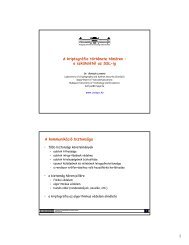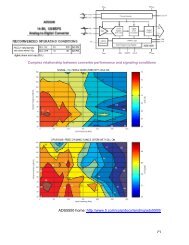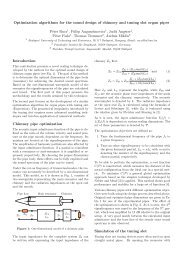HP 33120A User's Guide
HP 33120A User's Guide
HP 33120A User's Guide
Create successful ePaper yourself
Turn your PDF publications into a flip-book with our unique Google optimized e-Paper software.
Chapter 7 Tutorial<br />
Attributes of AC Signals<br />
dBm The decibel (dB) is commonly used to describe RMS voltage or<br />
power ratios between two signals. By itself, a decibel value has no<br />
particular meaning. Decibels are a ratio or comparison unit and have no<br />
absolute meaning without knowledge of a reference or comparison unit.<br />
When power comparisons are made to a 1 mW reference level, the letter<br />
m is added to give “dBm”. For power ratios such as dBm, it is common to<br />
specify the resistance loading the voltage source. Often the system<br />
resistance is added to the units by indicating “dBm (50Ω)” for a 50Ω<br />
resistance system.<br />
dB = 10 x log 10 ( P / Pref )<br />
dBm = 10 x log 10 ( P / 0.001 )<br />
where power P = V 2 /R<br />
For a 50Ω resistance, 1 mW of power corresponds to 0.224 VRMS.<br />
dBm (50W)<br />
Output Voltage Level (50W load)<br />
+23.98 3.53 VRMS<br />
+13.01 1.00 VRMS<br />
+6.99 500 mVRMS<br />
0.0 224 mVRMS<br />
-6.99 100 mVRMS<br />
-13.01 50 mVRMS<br />
Use the following conversions to determine dBm levels when connecting<br />
75Ω or 600Ω load resistances.<br />
dBm (75 Ω) = dBm (50 Ω) – 1.75<br />
dBm (600 Ω) = dBm (50 Ω) – 10.79<br />
286
















